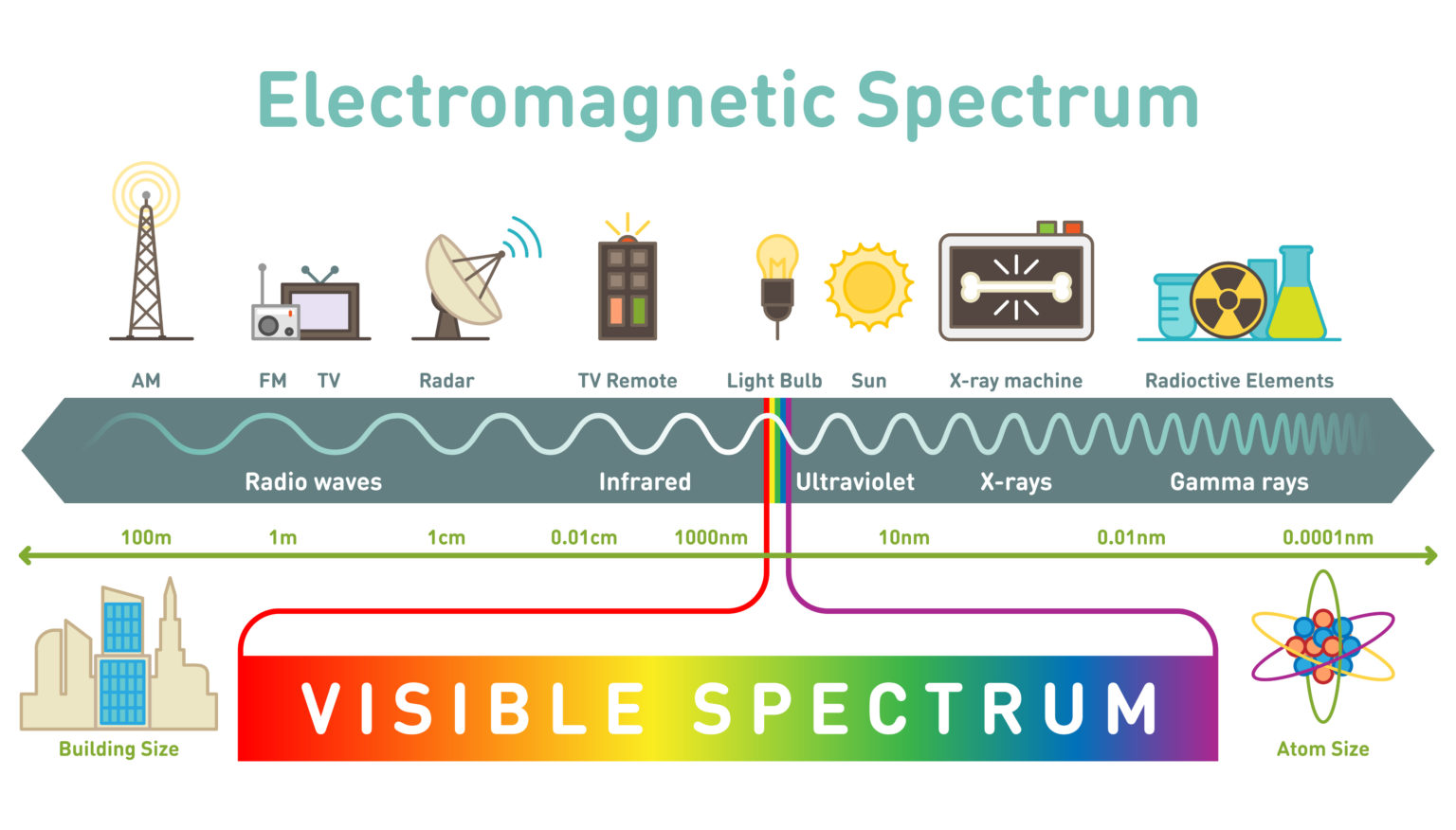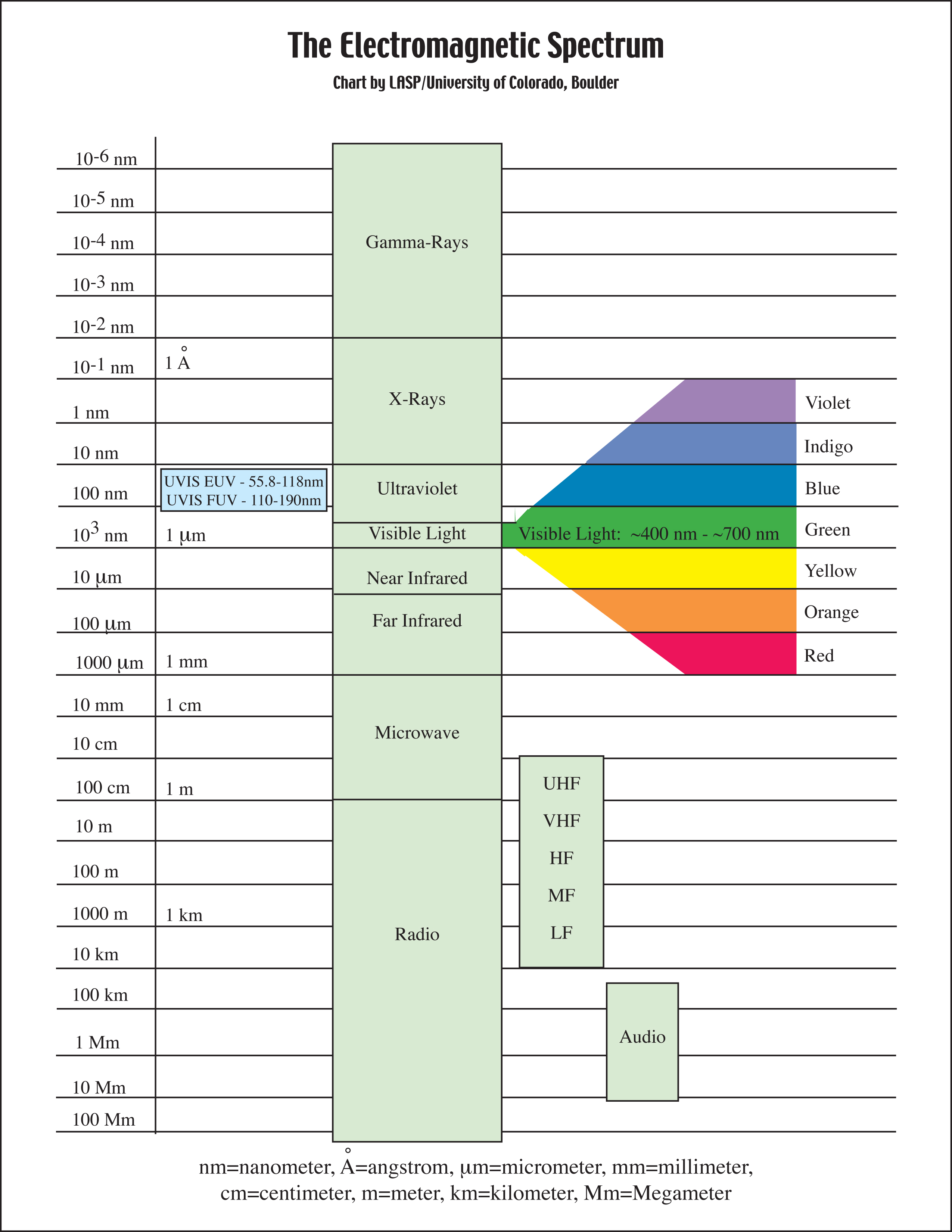Electromagnetic Spectrum Study Guide
INTRODUCTION
We are surrounded by a variety of electromagnetic waves that we are unaware of! Although we can’t see them with our naked eyes, we make extensive use of these waves in our daily lives, whether it’s listening to music on the radio, reheating pizza in the microwave, or even examining the appearance of a shattered bone. Let’s look at this collection of electromagnetic waves in more detail.
ELECTROMAGNETIC SPECTRUM
In simple words, the electromagnetic spectrum is the range of all types of electromagnetic radiation. It is a set of frequencies, wavelengths, and photon energies ranging from below 1 hertz to above 1025 hertz, with wavelengths ranging from a few kilometers to a part of an atomic nucleus’ size.
THE ELECTROMAGNETIC WAVES IN THE ELECTROMAGNETIC SPECTRUM
Radio waves, microwaves, infrared radiation, visible light, ultraviolet radiation, X-rays, gamma rays, and cosmic rays are the different regions of the electromagnetic spectrum. They are arranged in the order of decreasing frequency and rising order of wavelength.
An electromagnetic spectrum diagram is given below.
1. Radio waves:
A radio is a device that catches radio waves broadcasted by radio stations and is mostly used for television and mobile communication.
2. Microwaves:
Microwaves emit this type of radiation, which aids in-home/office cooking. Astronomers use it to figure out and demonstrate an understanding of surrounding galaxies and stars.
3. Infrared:
It’s commonly found in night vision goggles. The infrared light emitted by human skin and items with heat can be read and captured by these gadgets.
4. X- rays:
An x-ray machine can be used by a professional to take a picture of our bones or teeth. It is used by airport security staff to inspect and check luggage.
5. Gamma-rays:
In the health world, it has a wide range of applications. Gamma-ray imaging is a technique for looking inside our bodies. Surprisingly the universe is the biggest source of this!
6. UV radiation:
It is mostly produced by the sun. It tans the skin and creates burns. UV radiation is emitted by hot materials in space.
7. Visible light:
It is the light that can be seen with the naked eye. Visible light is produced by light bulbs, stars, and other objects.
SIGNIFICANCE
The major significance of the electromagnetic spectrum is that it can be used to categorize and organize electromagnetic waves as per their varied frequencies or wavelengths.
Below is a detailed electromagnetic spectrum chart containing the wavelengths and the frequency range.
SUMMARY
- The electromagnetic spectrum is the range of all types of electromagnetic radiation.
- Radio waves, microwaves, infrared radiation, visible light, ultraviolet radiation, X-rays, and gamma rays are the 7 types of electromagnetic waves.
- The electromagnetic spectrum’s significance is that it can be used to categorize and organize electromagnetic waves as per their varied frequencies or wavelengths.
FAQs
Q. What is the Significance of Electromagnetic Spectrums?
The electromagnetic spectrum’s significance is that it can be used to categorize and organize electromagnetic waves as per their varied frequencies or wavelengths.
Q. What are the 7 types of electromagnetic waves in the spectrum?
Radio waves, microwaves, infrared radiation, visible light, ultraviolet radiation, X-rays, and gamma rays are the 7 types of electromagnetic waves in the spectrum.
Q. How is the electromagnetic spectrum arranged?
The electromagnetic spectrum is arranged as per the frequencies and the wavelengths of the electromagnetic waves.
We hope you enjoyed studying this lesson and learned something cool about the Electromagnetic spectrum! Join our Discord community to get any questions you may have answered and to engage with other students just like you! We promise, it makes studying much more fun!😎
REFERENCE
- Electromagnetic Spectrum: https://www.ck12.org/physics/electromagnetic-spectrum-in-physics/lesson/Electromagnetic-Spectrum/?referrer=concept_details Accessed 14th April 2022.
- Electromagnetic Spectrum: https://www.britannica.com/science/electromagnetic-spectrum Accessed 14th April 2022.


